Kinda Sorta: Sweden Develops 'First' Female Crash Test Dummy

A team of engineers from Sweden has allegedly developed the first female crash test dummy. But what actually goes into making a human analog for crash testing and why haven’t there been more feminine versions of dummies that have technically existed for over 70 years?
Maybe we should start with a brief history lesson.
The Swedish National Road and Transport Research Institute is reportedly putting the finishing touches on a novel dummy it believes will offer more relevant testing data. Much of that hinges on new sensing equipment, varied calibrations, and new designs that can better simulate the female form. Though claiming it’s the very first female crash test dummy seems a little much. Engineers weren’t the ones patting themselves on the back by making the claim. That was left to dozens of media outlets, who appear to have made the assertion independently due to a lack of knowledge on the subject. But that didn't stop them from making the proclamation loud, proud, and often.
Despite there being plenty of evidence that crash test dummies predated the 1950s, that’s when we started seeing the ones that you might identify for use in the automotive sector. Before that, companies actually used corpses, and finding one in good enough shape to work for testing was often quite troublesome. It was also cost-prohibitive since they could only be used once and the public had some moral concerns about desecrating bodies. Dead animals were also tried, with pigs being a favorite after automakers learned that weapons manufacturers often used them to simulate human tissue.
Meanwhile, the United States Air Force was getting heavily into experimental aircraft and was establishing the foundation for what would eventually become NASA. Realizing that it couldn’t continue exposing pilots to increasingly extreme and often unknown physical conditions, the USAF started building humanoid dolls that could be used to take some of the burdens of living people. Created by the Alderson Research Labs and Sierra Engineering Company, “Sierra Sam” would become the first modern crash test dummy in 1949.
Initially intended for aviation, it wasn’t long until new variants were being created for the automotive sector. A few years later, General Motors began wondering if it couldn’t reverse engineer those designs to build a more comprehensive dummy specifically designed for car wrecks. The resulting concept was known as Hybrid I, due to it sampling the best tech from preexisting units, and was designed to simulate the average American driver in just about every way GM could manage. But this also meant it would be based on the male anatomy.
By 1972, the company introduced the Hybrid II crash test dummy, which added more realistic joints and ways of showcasing trauma. With the government on a regulatory kick, GM was almost immediately commissioned by the National Highway Transportation Safety Administration (NHTSA) to build a standardized dummy that could be used for testing. Enter the Hybrid III – General Motors’ humanoid masterpiece that’s still in broad use today. However the Hybrid III didn’t come alone, it was given an entire family to help with testing protocols. The main unit, released in 1976, was 5’9” and weighed 176 pounds. But it was given an entire family, including a wife, three small children, and a much taller/heavier friend that could be used to test the dynamics of larger occupants.
Volvo even developed a pregnant dummy in 2003. Unless the public school system has been grossly misinforming students for decades, it seems like that one would probably have to be a woman. Well, as much as a doll made out of plastic, aluminum, and steel can be. This immediately puts the kibosh on any direct claims that Sweden has delivered the first female test dummy. But it doesn’t mean that they haven’t provided an invaluable service.
While there’s evidence to suggest women may be more tolerant to higher gravitational forces in specific circumstances, their bodies are by-and-large less willing to endure physical trauma. Due to differences in musculature, bone density, skeletal structure, and overall mass, women are 17 percent more likely to die in a car crash and 73 percent more likely to sustain serious injuries in a front-end collision vs men. Those stats were shared by Smithsonian Magazine, which also tragically claimed that the Swedish dummy is the first female simulacrum to hit the market. But the more of those your author read, the easier it was to understand the surrounding argument.
Current dummies are adaptable to an array of situations and have new sensing equipment that we could have only dreamed of in the 1970s. However, they’re structurally similar with the most obvious difference being their size. The Swedish version is more shapely and has breasts, which not only makes the dummy a little easier on the eyes but also provides some useful information to researchers. It’s also said to have lower joint stiffness than its male counterpart, helping to address some disparities in musculature. Again, these are things that can be done on the Hybrid III but that unit has a less bodacious body.
Alright, we’re mocking the Swedish dummy a little. But there are actually some good reasons to give it breasts and wider hips, even if it’s just to see how the seatbelt might interact with those areas in a crash environment. It’s also loaded up with sensors, with the team focusing on low-severity, rear impact-collisions that tend to be much worse for women than men.
“We did test with different seats, and there we found that you could get quite different performances of the different seats depending on if it was the male or the female that were in these seats,” Astrid Linder, director of traffic safety at the Swedish National Road and Transport Research Institute and leader of the research, told NPR (another outlet that erroneously called it the first female crash test dummy).
When speaking with the BBC, Linder also noted that women “have differences in the shape of the torso and the center of gravity and the outline of our hips and pelvis,” suggesting that certain types of crashes or safety equipment may impact them differently.
But that doesn’t necessarily mean it’ll be better than the units currently being fielded. The studies being conducted with the new female model focus overwhelmingly on how female drivers are impacted by whiplash and the need for developing varied dummies to help create a more comprehensive testing environment. However, none of that guarantees that the new dummy will be head and shoulders above the current incarnation of Hybrid III. Truth be told, crash testing already involves so many variables that it’s difficult to account for all of them. Trying to create a dummy for every single body type is a tall order and one that might not be all that useful when you consider just how different safety equipment is between vehicles. Even the same model might use totally different seats between two trims.
There probably should be a place for more realistic dummies, so we shouldn’t discount what Lindel and company are doing here. But the design is in its infancy and it seems like they’re also very eager to get regulators to take the bait. In fact, most of the articles cited in this piece make mention about the need for the U.S. to adopt better safety testing practices. Lindel even mentions that safety agencies should stop focusing exclusively on using male analogs to NPR – even though that’s not exactly what’s been happening.
As previously stated, the Hybrid III comes in an array of shapes and sizes and tries to accommodate for varied body types. However, this resulted in authors suggesting that new laws may need to be put in place to ensure regulators conduct testing using more specified dummies that are overtly representative of women. This repeatedly resulted in their making mention of a 2021 initiative where the U.S. House of Representatives introduced legislation to “improve the federal government’s vehicle safety testing practices, specifically those involving the use of crash test dummies,” specifically as they relate to female drivers.
Assuming the dummy is as advanced as claimed, it’s probably good to have the extra data. Though one wonders if this will actually help level out any safety disparity between genders. Physics is pretty consistent about what happens when objects collide. The larger of the two tends to win out and that’s likely to be true whether you’re talking about the vehicles themselves or the people riding inside of them.
[Image: Benoist/Shutterstock]
Become a TTAC insider. Get the latest news, features, TTAC takes, and everything else that gets to the truth about cars first by subscribing to our newsletter.

A staunch consumer advocate tracking industry trends and regulation. Before joining TTAC, Matt spent a decade working for marketing and research firms based in NYC. Clients included several of the world’s largest automakers, global tire brands, and aftermarket part suppliers. Dissatisfied with the corporate world and resentful of having to wear suits everyday, he pivoted to writing about cars. Since then, that man has become an ardent supporter of the right-to-repair movement, been interviewed on the auto industry by national radio broadcasts, driven more rental cars than anyone ever should, participated in amateur rallying events, and received the requisite minimum training as sanctioned by the SCCA. Handy with a wrench, Matt grew up surrounded by Detroit auto workers and managed to get a pizza delivery job before he was legally eligible. He later found himself driving box trucks through Manhattan, guaranteeing future sympathy for actual truckers. He continues to conduct research pertaining to the automotive sector as an independent contractor and has since moved back to his native Michigan, closer to where the cars are born. A contrarian, Matt claims to prefer understeer — stating that front and all-wheel drive vehicles cater best to his driving style.
More by Matt Posky
Latest Car Reviews
Read moreLatest Product Reviews
Read moreRecent Comments
- Dave M. I'm sorry to see any storied name go away. The lifespan of the Malibu has fit perfectly in my lifetime years-wise. Some of the highlights include the first and second generations, the '78 revamp (very clean design), and the 2005 generation. Ford, GM and Mopar gave this segment away by allowing Toyota and Honda a foot in the door and then always having to play catch-up. How hard is it to make a truly competitive sedan at a profit? Obviously, Japan Inc. figured it out.I've driven a few rentals these past years; the Malibu got the job done but honestly the Passat and Altima were my rental preferences.
- Kcflyer actually yes. It's a shame that a product this uncompetitive can still outsell GM's entire EV offerings. Those products have had billions thrown at them. Imagine how nice the new Malibu, Impala, SS, and Lacrosse would be with that kind of commitment.
- 3SpeedAutomatic Nope....
- Bd2 Looking forward to flooding the rental lots with Hyundai and Kia models, this is just one obstacle now eliminated.
- Kcflyer keep the color. lose the stupid front design. make it reliable, at least as reliable as a base 911. Then and only then is it somewhat worthy of that price.



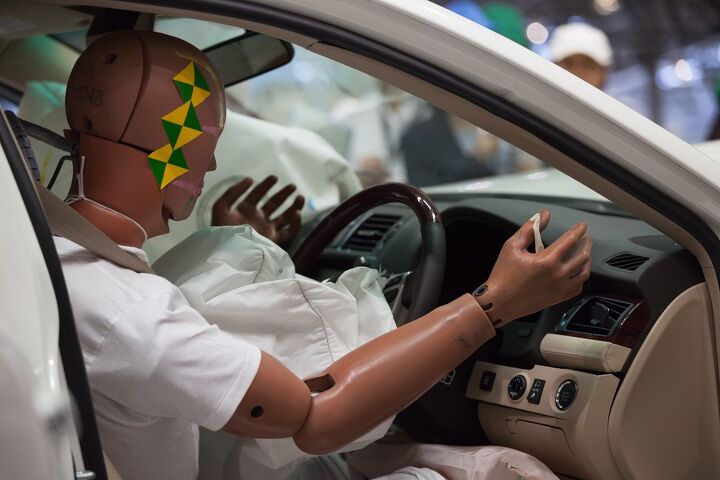


















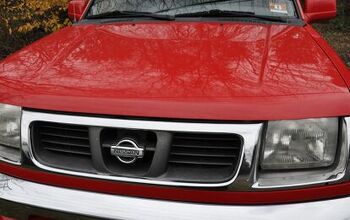
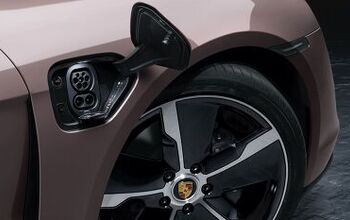




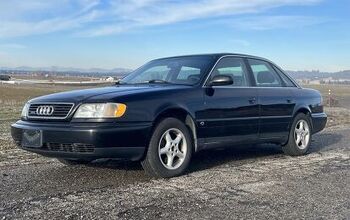
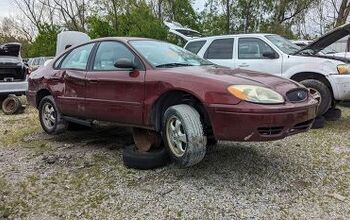
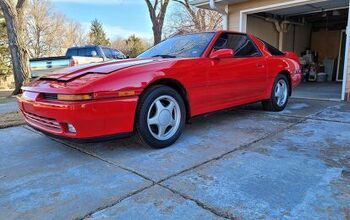



Comments
Join the conversation
In the US I'm sure they will develop a dummy which was assigned a male when it was built but now identifies as female for crash test use.
I'm just glad to see that "Sweeden" got fixed between yesterday and today.
Y'all can resume gender identity arguments and assignments or what other red meat issues have the world p****d off this hour.